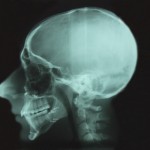
The growing interest in patient focused outcome in healthcare has seen a growth in interest in patient satisfaction. While high rates of patient satisfaction have been reported from orthognathic surgery clinicians sometimes fail to receive positive feedback from patients. The aim of this review was to synthesise available studies that have evaluated factors associated with patients’ satisfaction after orthodontic treatment combined with orthognathic surgery.
Methods
Searches were conducted in the Medline/PubMed, EBM Reviews, Web of Science, Embase, LILACS, Scopus and Goggle scholar databases. Studies that evaluated factors associated with patient satisfaction after the conclusion of an orthodontic treatment combined with an orthognathic surgery were considered. Two reviewers independently screened the studies with three reviewers extracting data. Study quality was assessed using the Newcastle-Ottawa Scale, modified for cross-sectional studies. A narrative summary of the included studies was presented.
Results
- 8 studies involving a total of 998 patients were included.
- There was a large variation in samples size (44-505 patients) and age range (15-72 years), psychological evaluation tools and time lapsed for assessment to treatment completion.
- A majority (5 studies) were considered to have a high risk of bias.
- The following factors were associated with satisfaction.
- Final aesthetic outcome;
- Perceived social benefits from the outcome;
- Type of orthognathic surgery;
- Sex (female patients were more likely to link dental appearance and satisfaction with treatment out-come;
- Changes in patient self-concept after treatment.
- The following factors were associated with dissatisfaction:
- Treatment length;
- Sensation of functional impairment and dysfunction after surgery;
- Information about the risks of surgery was not provided.
Conclusions
The authors concluded:
Although a number of factors were identified that were associated with patients’ satisfaction or dissatisfaction with orthodontic treatment combined with orthognathic surgery; the available evidence was limited. Listed factors should therefore be considered cautiously.
Comments
Yesterday we looked at a study assessing patient and parental satisfaction with orthodontic treatment. This review looks at the more specialised end of the orthodontic spectrum where it is combined with orthognathic surgery. Not unexpectedly the number of studies that have assessed patients satisfaction is smaller although the available literature suffers from similar problems to those noted in yesterday’s review. Sample sizes, age ranges, outcome evaluation tools and evaluation tools all vary.
The authors also note that there were variation in the collection methods ranging from face-to-face interview, mailed questionnaire or structured interview by phone. Any or all of these could have a significant effect on the findings so despite that fact that the authors have provided a list of potential factors associated with satisfaction and dissatisfaction with combined orthodontic treatment and orthognathic surgery the authors recommendation that these findings should be interpreted cautiously should be heeded.
Links
Original review protocol CRD42014014542
Pachêco-Pereira C, Abreu LG, Dick BD, De Luca Canto G, Paiva SM, Flores-Mir C. Patient satisfaction after orthodontic treatment combined with orthognathic surgery: A systematic review. Angle Orthod. 2015 Aug 27. [Epub ahead of print] PubMed PMID: 26313228.
Dental Elf – 30th Jul 2012 – What motivates patients to seek orthognathic surgery

Patient satisfaction with combined orthodontic treatment and orthognathic surgery http://t.co/F4JioVUKU0
Patient satisfaction orthognathic treatment http://t.co/F4JioVUKU0
Patient satisfaction orthodontic/orthognathic treatment http://t.co/F4JioVUKU0
Several factors associated with patients’ satisfaction with orthodontic/orthognathic surgery http://t.co/F4JioVUKU0
It’s always a joy to have our paper commented by one authority in Evidence-Based Dentistry.
Great!
Don’t miss – Patient satisfaction orthognathic treatment http://t.co/F4JioVUKU0